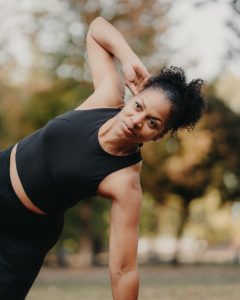6 The Body

We’ll begin this section by reviewing the physical development that occurs during infancy, a period that starts at birth and continues until the second birthday. At birth, infants are equipped with a number of reflexes, which are involuntary movements in response to stimulation. We will explore these innate reflexes and then consider how these involuntary reflexes are eventually modified through experiences to become voluntary movements and the basis for motor development as skills emerge that allow an infant to grasp food, roll over, and take the first step.
Children in early childhood are physically growing at a rapid pace. If you want to have fun with a child at the beginning of the period, ask them to take their left hand and use it to go over their head to touch their right ear. They cannot do it. Their body proportions are such that they are still built very much like an infant with a very large head and short appendages. By the time the child is five years old though, their arms will have stretched, and their head is becoming smaller in proportion to the rest of their growing bodies. They can accomplish the task easily because of these physical changes. Children enter middle childhood still looking very young, and end the stage on the cusp of adolescence. Most children have gone through a growth spurt that makes them look rather grown-up.
Physical changes of puberty mark the onset of adolescence (Lerner & Steinberg, 2009). For both boys and girls, these changes include a growth spurt in height, growth of pubic and underarm hair, and skin changes (e.g., pimples). Boys also experience growth in facial hair and a deepening of their voice. Girls experience breast development and begin menstruating. These pubertal changes are driven by hormones, particularly an increase in testosterone for boys and estrogen for girls. The physical changes that occur during adolescence are greater than those of any other time of life, with the exception of infancy. In some ways, however, the changes in adolescence are more dramatic than those that occur in infancy—unlike infants, adolescents are aware of the changes that are taking place and of what the changes mean.
Hippocrates (author of the famous “Hippocratic oath”) was of the opinion that “walking is the best medicine.” This was his learned opinion in 400 BCE and there is now considerable, and increasing, evidence that he may have been correct. As we will see, there are simple physiological changes that accompany middle adulthood. These are somewhat inevitable, but the importance of physical activity at this age range would be difficult to overstate looking at the evidence. Exercise does not necessarily mean running marathons, it may simply mean a commitment to using your legs in a brisk fashion for thirty minutes. “Use it or lose it” is a good mantra —the technical term for the the loss of muscle tissue and function as we age is sarcopenia. From age 30, the body loses 3-8% of its muscle mass per decade, and this accelerates after the age of 60 (Volpi et al, 2010). Diet and exercise can ameliorate both the extent and lifestyle consequences of these kinds of processes. [1]
While late adulthood is generally a time of physical decline, there are no set rules as to when and how it happens. We are continually learning more about how to promote greater health during the aging process.
In This Section:
References (Click to expand)
Lerner, R. M., & Steinberg, L. (Eds.). (2009). Handbook of adolescent psychology, volume 1: Individual bases of adolescent development (Vol. 1). John Wiley & Sons.
Licenses & Attributions (Click to expand)
- Volpi, E., Nazemi, R., & Fujita, S. (2004). Muscle tissue changes with aging. Current opinion in clinical nutrition and metabolic care, 7(4), 405-10. ↵
